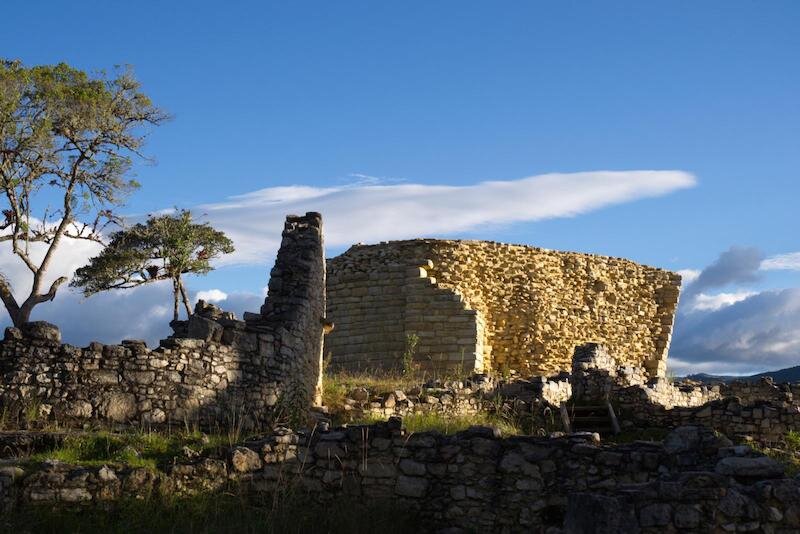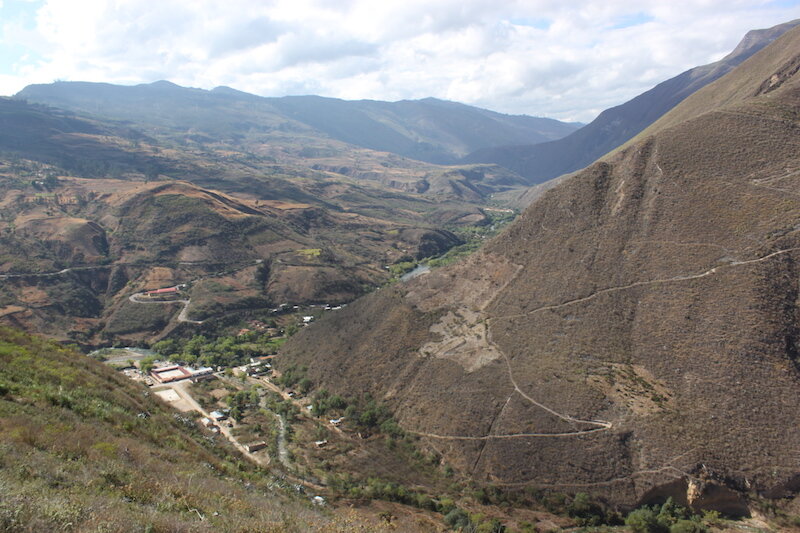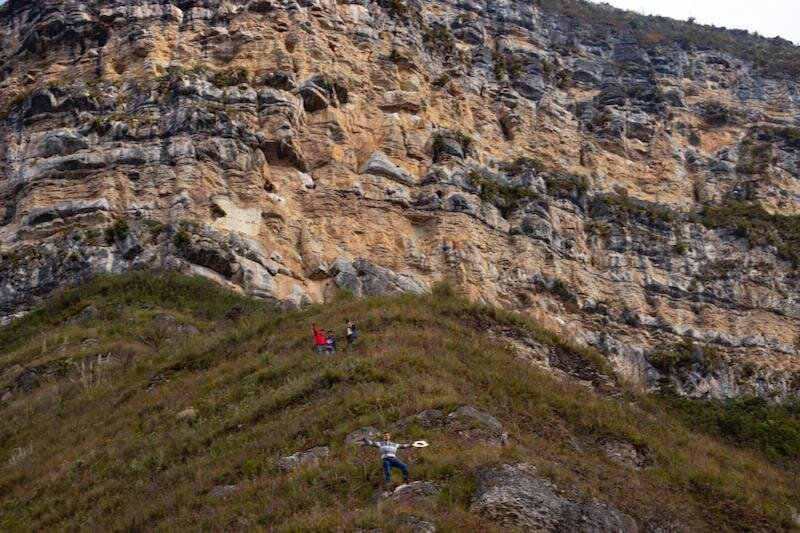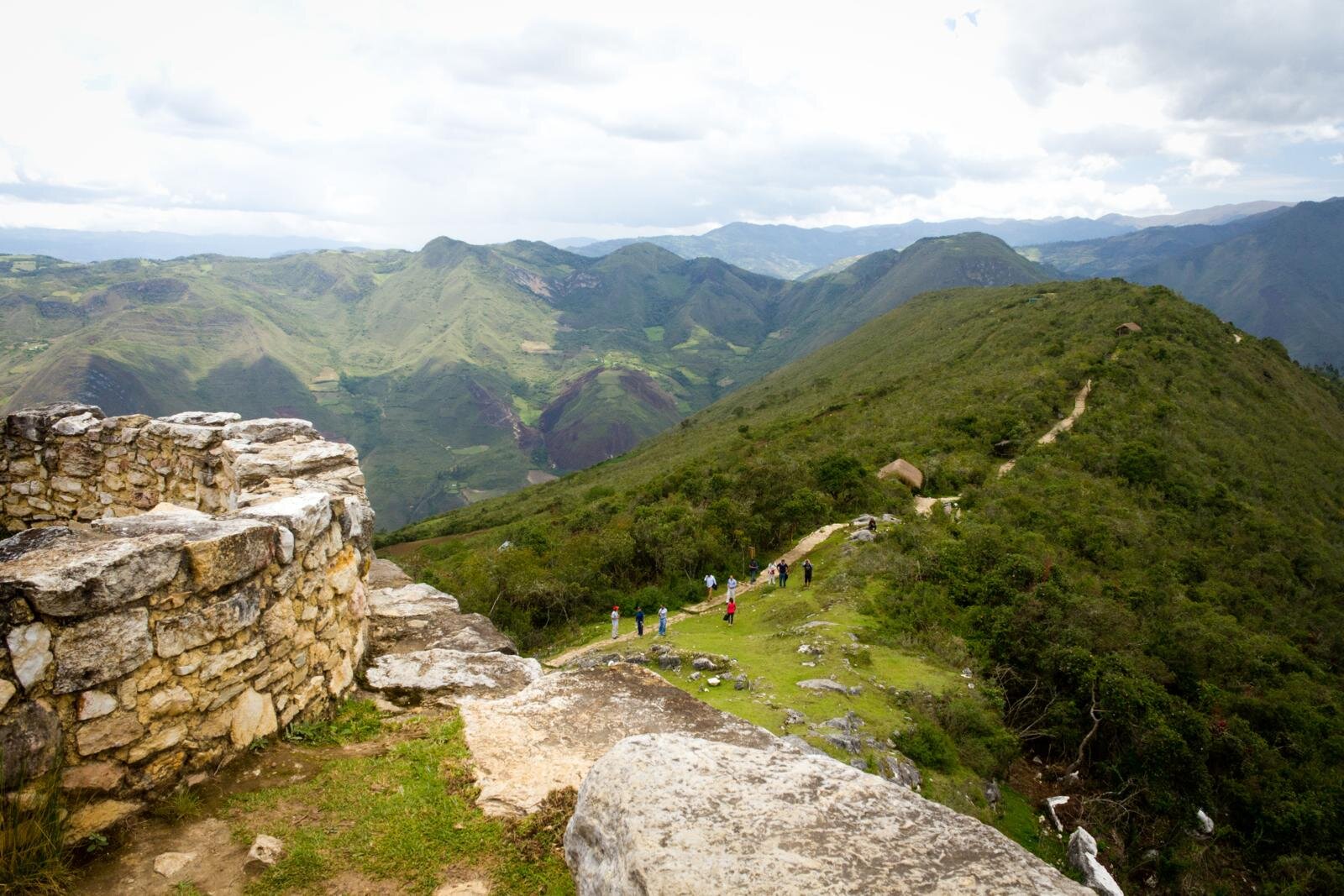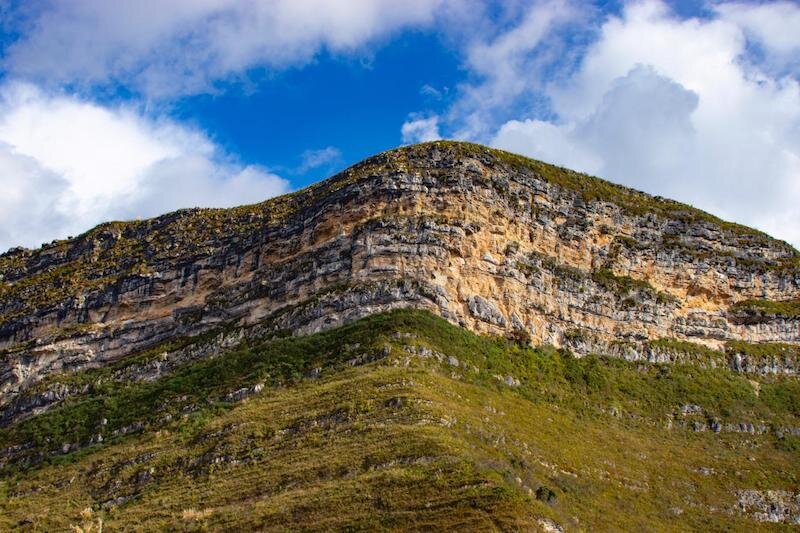chachapoyas to Kuelap Trek
A 3 or 4-day hike exploring legacy of little-studied Chachapoya culture.
Following Qhapaq Ñan, ancient pre-Columbian network of trails.
Archaeological highlights include Yalape, Machu Pirqa & Macro.
Ends with horse ride up to Kuelap, to visit 'Machu Picchu of the North'.
4-day itinerary includes a night sleeping in shadow of Kuelap.
Fully-supported trek, with guide & horse wranglers; accommodation in basic guesthouses or tents.
Overview
The route from Chachapoyas to Kuelap is a lesser-known trail that covers sections of the great Qhapaq Ñan, the enormous system of pre-Columbian paths that stretched for at least 39,900 km (24,800 miles) … and which is now a UNESCO World Heritage Site.
And like the Classic Inca Trail to Machu Picchu, this trek visits a number of smaller archaeological sites before culminating in a truly bucket-list ruin, Kuelap Citadel, perched on a mountain-top.
This trek, then, is an investigation of the Chachapoya civilisation through the physical remains of their buildings.
It is also an insight into modern-day Northern Andean living, as we pass through farms and villages that demonstrate varying degrees of Hispanic influence.
Chachapoyas to Kuelap Trek: 3-Day Itinerary Outline:
Day 1: Hike from Chachapoyas to Levanto. Visit Yalape. Overnight in Levanto.
Day 2: Hike to Tingo, via Machu Pirqa, Macro & Cilic. Overnight in Tingo
Day 3: Horse ride to Kuelap Citadel; guided visit. Cable car & car to Chachapoyas.
Chachapoyas to Kuelap Trek: 4-Day Itinerary Outline:
Day 1: Hike from Chachapoyas to Levanto. Visit Yalape. Overnight in Levanto.
Day 2: Hike to Tingo, via Machu Pirqa, Macro & Cilic. Overnight in Tingo
Day 3: Horse ride to Kuelap village. Overnight in Kuelap.
Day 4: Short hike to Kuelap Citadel; guided visit. Cable car & car to Chachapoyas.
Prices
Below prices are per person, based on two people sharing a room/tent.
| Itinerary | Length | Prices From |
|---|---|---|
| Chacha - Kuelap | 3 Days | £170 / $211 |
| Chacha - Kuelap | 4 Days | £198 / $246 |
3D Itinerary
Chachapoyas to Kuelap 3-DAY Trek: Detailed Itinerary:
Day 1: Chachapoyas - Levanto: Yalape (L,D)
Chachapoyas farmer working with oxen.
This morning, we begin trekking from Chachapoyas, heading gradually uphill along a path that has been trodden for centuries.
Over the course of the day, we cover a distance of 15 km (9 miles), at a comfortable pace, through rolling farmland, which is still farmed using traditional methods.
Along the way, we visit the archaeological site of Yalape, located at 2,700 m (8,858 ft) above sea level.
It is believed that Yalape was built and inhabited by the Chachapoya civilisation, between 1100 and 1300 AD. The stone architecture is typical of the Chachapoya: circular buildings covered in symmetrical high-relief friezes, in the shape of rhombuses and zig-zags.
After some 5 hours’ hiking, we arrive in Levanto and the rest of the day is free to relax and explore the peaceful surroundings.
A plaque to Alonso de Alvarado in Levanto.
Founded in 1535 by the Conquistador Alonso de Alvarado, Levanto was originally intended to be the centre of Spanish power in the region.
However, in 1538, this was moved to present-day Chachapoyas (or San Juan de la Frontera de los Chachapoyas, to give it its full name), and Levanto remains a pleasantly unhurried place to this day, with little evidence of a Colonial past.
Dinner & overnight in Levanto in a simple guesthouse.
Day 2: Levanto - Machu Pirqa - Macro - Cilic - Tingo (B,L,D)
After breakfast, we set off for our second day of hiking. It is slightly longer than yesterday, covering some 18 km (11 miles) and with visits to a number of Chachapoya ruins along the way.
The first significant archaeological site is Machu Pirqa (also spelt Machupirca), which means ‘old wall’ in Quechua. This is a funerary site, located at 1,900m (6,234 ft) on the left bank of the Kuntichaka (or Condechaca) River, a tributary of the Utcubamba, and at the entrance of Shihual Cave.
The stone buildings here were constructed to house the remains of Chachapoya dignitaries.
Circular residences at Macro.
Not far beyond Machu Pirqa is Macro, a pre-Incan residential compound dating roughly from 1100 to 1300 AD.
It is located on the south-west slope of a steep, rocky spur, and covers 3 hectares (7.4 acres), in the shadow of Kuelap.
There are five platforms accommodating around 100 people in huts and towers made of stones and held together by mud cement.
Again, the houses are decorated with rhomboidal friezes and niches in the walls.
Finally, we cross the Utcubamba River to reach the ruins of Cilic (also spelt Silic).
After this final visit, we trek the short distance to the village of Tingo, where we have dinner and spend the night in a family-run guesthouse.
Day 3: Tingo - Kuelap - Chachapoyas (B,L)
After breakfast, we begin the 9 km (6 mile) horseback ride to the unique archaeological site of Kuelap.
While we let the horses take the strain, we can watch the scenery change as we ascend from 1,800 m (5,906 ft) in the valley floor, to the hilltop citadel at 3,000m (9,843 ft).
The massive outer wall at Kuelap.
We have lunch in a local community along the way.
Once at Kuelap, we have a guided tour of this extensive and impressive site.
We then walk down to the cable car station for the picturesque journey back to Nuevo Tingo, where a vehicle will be waiting to return us to Chachapoyas.
4D Itinerary
Chachapoyas to Kuelap 4-DAY Trek: Detailed Itinerary:
Day 1: Chachapoyas - Levanto: Yalape (L,D)
This morning, we begin trekking from Chachapoyas, heading gradually uphill along a path that has been trodden for centuries.
View towards Chachapoyas from Collacruz.
Over the course of the day, we cover a distance of 15 km (9 miles), at a comfortable pace, through rolling farmland, which is still farmed using traditional methods.
Along the way, we visit the archaeological site of Yalape, located at 2,700 m (8,858 ft) above sea level.
It is believed that Yalape was built and inhabited by the Chachapoya civilisation, between 1100 and 1300 AD.
The stone architecture is typical of the Chachapoya: circular buildings covered in symmetrical high-relief friezes, in the shape of rhombuses and zig-zags.
After some 5 hours’ hiking, we arrive in Levanto and the rest of the day is free to relax and explore the peaceful surroundings.
Unpaved streets of Levanto with backdrop of mountains.
Founded in 1535 by the Conquistador Alonso de Alvarado, Levanto was originally intended to be the centre of Spanish power in the region.
However, in 1538, this was moved to present-day Chachapoyas (or San Juan de la Frontera de los Chachapoyas, to give it its full name), and Levanto remains a pleasantly unhurried place to this day, with little evidence of a Colonial past.
Dinner & overnight in Levanto in a simple guesthouse.
Day 2: Levanto - Machu Pirqa - Macro - Cilic - Tingo (B,L,D)
After breakfast, we set off for our second day of hiking. It is slightly longer than yesterday, covering some 18 km (11 miles) and with visits to a number of Chachapoya ruins along the way.
The first significant archaeological site is Machu Pirqa (also spelt Machupirca), which means ‘old wall’ in Quechua. Located at 1,900m (6,234 ft) on the left bank of the Kuntichaka (or Condechaca) River, a tributary of the Utcubamba, and at the entrance of the Shihual Cave.
It is a funerary site, whose stone buildings were constructed to house the remains of Chachapoya dignitaries.
View of Macro from other side of the Utcubamba Valley.
Not far beyond Machu Pirqa is Macro, a pre-Incan residential compound dating roughly from 1100 to 1300 AD.
It is located on the south-west slope of a steep, rocky spur, and covers 3 hectares (7.4 acres), in the shadow of Kuelap.
There are five platforms accommodating around 100 people in huts and towers made of stones and held together by mud cement.
Again, the houses are decorated with rhomboidal friezes and niches in the walls.
Finally, we cross the Utcubamba River to reach the ruins of Cilic (also spelt Silic).
After this final visit, we trek the short distance to the village of Tingo, where we have dinner and spend the night in a family-run guesthouse.
Day 3: Tingo - Kuelap (B,L,D)
After breakfast, we begin the 9 km (6 mile) horseback ride towards the unique archaeological site of Kuelap.
As we let the horses take the strain, we ascend from 1,800 m (5,906 ft) in the valley floor, to just below the mountain-top citadel at 3,000m (9,843 ft).
Cerro Barreto, the mountain on which Kuelap was constructed.
We arrive at a small community set on the side of Cerro Barreto (Barreto Mountain) in the shadow of Kuelap, that is home to many of the people who work as guides or maintenance staff at the site.
This is where we have lunch and dinner, and spend the night in tents, absorbing the atmosphere of this unique place.
Day 4: Kuelap - Chachapoyas (B,L)
Kuelap Citadel’s huge outer wall.
We have breakfast in Kuelap Village, and then have a short hike to Kuelap.
Once at Kuelap, we have a guided tour of this extensive and impressive site. Having arrived early, we should have the place fairly much to ourselves.
After the tour, we walk down to the cable car station for the picturesque journey back to Nuevo Tingo where a vehicle will be waiting to return us to Chachapoyas.
Inclusions
INCLUDED:
All transfers mentioned in itinerary
Entrance fees
3 nights' accommodation in hostels or tents (according to wishes)
3 breakfasts, 4 lunches & 3 dinners
Horses & wrangler
Official English-speaking Tour Guide
First Aid Kit
Cable-car ticket from Kuelap to Nuevo Tingo
NOT INCLUDED:


